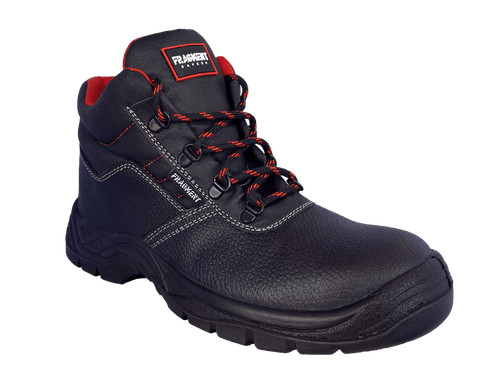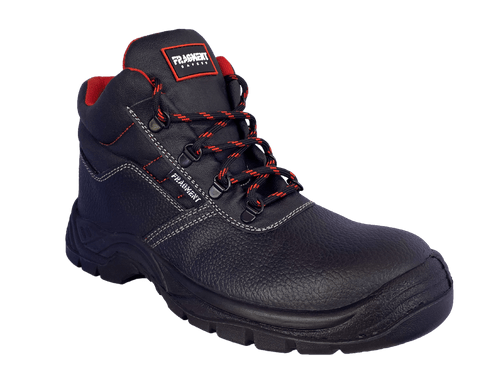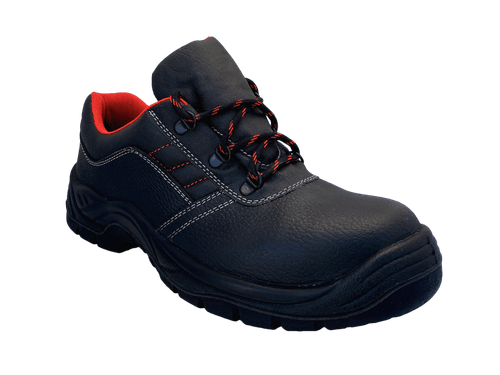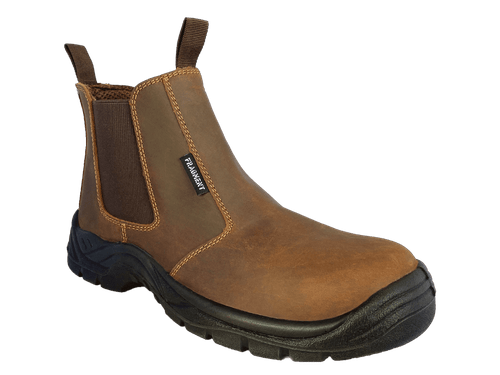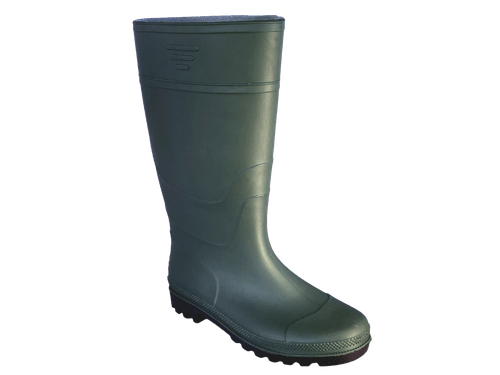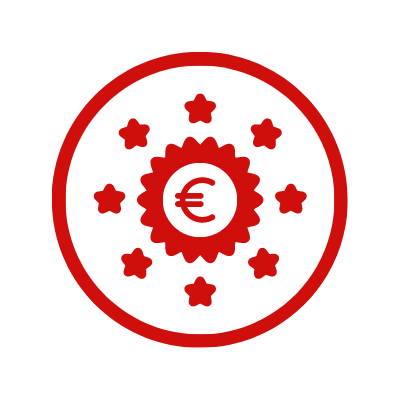

PPE Provider in Africa - Safety Shoes for Africa - Personal Protective Equipment for Africa - Mining Workwear for Africa - Petrol Workwear for Africa - Safety Boots for Africa - Workwear Supplier in Africa - Rain Protective Clothes - High Visibility Clothes - Personal Protective Equipment Supplier in Africa
OUR PPE PRODUCTS
Here, you will find all our safety equipment & PPE !
AllHead ProtectionGumbootsCotton WorkwearPetrol WorkwearMining GarmentsHigh Visibility ClothesRain Protective ClothesDisposable CoverallsMasksSafety ShoesRangersLoad MoreSIZE CORRESPONDENCE TABLE :

- SAFETY STANDARDS
What are the standards for
Safety shoes ?ISO STANDARDS
EN ISO 20344 : Test methods for safety shoes
Standards summarizing all the tests and test methods performed on safety shoes before they are placed on the market. This Standard is used in conjunction with EN ISO 20345 and EN ISO 20347 which define the basic and additional requirements for safety footwear
EN ISO 20345 : Specification of safety shoes for professional use
This international standard specifies the basic and additional (optional) requirements for general purpose safety footwear. The safety shoe is equipped with a safety toe resistant to impacts equivalent to 200 joules and crushing of 15 KNEN ISO 20347 : Specifications for work footwear for professional use
This footwear is different from safety footwear by the fact that these do not have toe caps against injury from falling objects or crushing impacts
SLIP RESISTANCE
SYMBOLS & TYPES OF FLOORS
SRA Hard industrial indoor floors (tile type)
SRB Hard industrial indoor or outdoor floors
(paint or resin type)
SRC SRA + SRB = SRC indoor or outdoor floors
(polyvalent type)GENERAL REQUIREMENTS


ADDITIONAL SPECIFICATIONS
In addition, there are particular markings for particular specifications :
AN : Protection of the malleolus
C : Conductive because electrical resistance does not exceed 100kW
CI : Cold insulation
CR : Upper cut resistant
ESD : Dissipative shoe
HI : Heat insulation
HRO : Heat resistant outsole up to 300°C (for 60 seconds)
M : Metatarsus protection against choc impacts
WR : Water resistant (waterproof)RECOMMENDED STORAGE CONDITIONS
We recommend storing safety shoes as follows :
- Do not compress or bend
- Do not store near steam pipes, radiators or other sources of artificial heat or expose directly sunlight, artificial light or other sources of ozone
- Storage ambient temperature must be between 10° C and 21° C. Storage temperature should not exceed 35° C
What are the standards for
Disposable Masks (respiratory protection) ?FFP1
Maximum using time : 8h00
Nominal Protection Factor** X4Particles without specific toxicity and water-based aerosols
Ex : Cotton, graphite, sodium hydroxide, calcium carbonate, cement, cellulose...
CE - EN149FFP2
Maximum using time : 8h00
Nominal Protection Factor** X12
Solid and / or liquid aerosols indicated as dangerous or irritant
Ex : softwoods, metals, resin, fiberglass, mineral fiber, charcoal...
CE - EN149FFP3
Maximum using time : 8h00
Nominal Protection Factor** X50
Toxic solid and / or liquid aerosols
Ex : hardwoods, ceramic, rock wool, cadmium, chromium, powdered pesticide...
CE - EN149EN ISO 149 : Specification of respiratory protection devices (filtering half-masks):
This standard specifies the minimum characteristics to be required of filtering half-masks used as respiratory protection devices against particles. It defines three classes of filtration efficiency, namely FFP1, FFP2 and FFP3 * TIL : Leaking of the ambiant atmosphere into the respiratory interface mesured in laboratory
* TIL : Leaking of the ambiant atmosphere into the respiratory interface mesured in laboratory
** FPN : Nominal Protection Factor corresponds to the level of protection tested in the laboratory. The nivel of APF, Assigned Protection Factor, might be different according local regulationsWhat are the standards for
Protective Clothing (body protection) ?HIGH VISIBILITY CLOTHING
EN ISO 20471 :This standard specifies the requirements for protective clothing aiming to signal the presence of the wearer visually, so that he may be detected and seen in hazardous situations, in all conditions of daylight, and night under illumination of car headlights. There are three classes of high-visibility colthing. Each class must have minimum surfaces of visible material constituing the garnment. The higher the class, the more visible the garnment.

Marking :
X : Class of high visiblity surface (From 1 to 3)PROTECTIVE CLOTHING AGAINST RAIN
EN ISO 343 :This standard specifies the requirements and test methods applicable to the materials and seams of protective clothing against foul weather (for example precipitation in the form of rain or snow), fog and ground humidity
 X : Résistance to water penetration, Wp
X : Résistance to water penetration, Wp
X : Water vapour resistance, RetWhat are the standards for
Disposable Coverall (chemical protection) ?

EN ISO 13034 :
Protective clothing against liquid chemicals (splashes)
EN ISO 13982-1 :
Protective clothing for use against solid particules (dust-asbestos)
EN ISO 14605 :
Protective clothing for use against liquid chemicals (sprays-fogs)
EN ISO 1149-5 :
Protective clothing to dissipate static electricity
EN ISO 1073-2 :Protective clothing against radioactive contamination
EN ISO 14126 :Protective clothing against infective agents
OUR PRODUCTS' ADVANTAGES
5 good reasons to use our PPE products

ROBUSTNESS

STANDARDS

PRICE

COMFORT

DESIGN
FRAGMENT SAFETY - PPE Provider for Africa and Tropical Countries
PPE Provider in Africa - Safety Shoes for Africa - Personal Protective Equipment for Africa - Mining Workwear Africa - Petrol Workwear Africa - Safety Boots for Africa - Workwear Supplier in Africa - Rain Protective Clothes - High Visibility Clothes - Personal Protective Equipment Supplier in Africa
All rights reserved - 2024 - Website made by DEL CARIBE


